1. Bagby M, Marshall SJ, Marshall GW Jr. 1990; Metal ceramic compatibility: a review of the literature. J Prosthet Dent. 63:21–5. DOI:
10.1016/0022-3913(90)90259-F. PMID:
2404102.
2. Isgrò G, Pallav P, van der Zel JM, Feilzer AJ. 2003; The influence of the veneering porcelain and different surface treatments on the biaxial flexural strength of a heat-pressed ceramic. J Prosthet Dent. 90:465–73. DOI:
10.1016/j.prosdent.2003.08.003. PMID:
14586311.
3. Kim HK, Kim SH, Lee JB, Han JS, Yeo IS, Ha SR. 2016; Effect of the amount of thickness reduction on color and translucency of dental monolithic zirconia ceramics. J Adv Prosthodont. 8:37–42. DOI:
10.4047/jap.2016.8.1.37. PMID:
26949486. PMCID:
PMC4769888.
4. Christel P, Meunier A, Heller M, Torre JP, Peille CN. 1989; Mechanical properties and short-term in-vivo evaluation of yttrium-oxide-partially-stabilized zirconia. J Biomed Mater Res. 23:45–61. DOI:
10.1002/jbm.820230105. PMID:
2708404.
5. Teichmann M, Wienert AL, Rückbeil M, Weber V, Wolfart S, Edelhoff D. 2018; Ten-year survival and chipping rates and clinical quality grading of zirconia-based fixed dental prostheses. Clin Oral Investig. 22:2905–15. DOI:
10.1007/s00784-018-2378-1. PMID:
29520468.
6. Stefanescu C, Ionita C, Nechita V, Drafta S, Oancea L, Petre A. 2018; Survival Rates and Complications for Zirconia-Based Fixed Dental Prostheses in a Period up to 10 Years: A Systematic Review. Eur J Prosthodont Restor Dent. 26:54–61. DOI:
10.1922/EJPRD_01681Stefanescu08. PMID:
29517875.
8. Marchack BW, Sato S, Marchack CB, White SN. 2011; Complete and partial contour zirconia designs for crowns and fixed dental prostheses: a clinical report. J Prosthet Dent. 106:145–52. DOI:
10.1016/S0022-3913(11)60112-1. PMID:
21889000.
9. Thalji GN, Cooper LF. 2014; Implant-supported fixed dental rehabilitation with monolithic zirconia: a clinical case report. J Esthet Restor Dent. 26:88–96. DOI:
10.1111/jerd.12078. PMID:
24382100.
10. Malkondu O, Tinastepe N, Kazazoglu E. 2016; Influence of type of cement on the color and translucency of monolithic zirconia. J Prosthet Dent. 116:902–8. DOI:
10.1016/j.prosdent.2016.05.001. PMID:
27422235.
11. da Silva LH, de Lima E, de Paula Miranda RB, Favero SS, Lohbauer U, Cesar PF. 2017; Dental ceramics: a review of new materials and processing methods. Braz Oral Res. 31 Suppl 1:e58. DOI:
10.1590/1807-3107bor-2017.vol31.0058. PMID:
28902238.
12. da Silva LH, de Lima E, Hochman M, Özcan M, Cesar PF. 2017; Monolithic Zirconia for Prosthetic Reconstructions : Advantages and Limitations. Curr Oral Health Rep. 4:197–200. DOI:
10.1007/s40496-017-0153-z.
13. Zhang F, Inokoshi M, Batuk M, Hadermann J, Naert I, Van Meerbeek B, Vleugels J. 2016; Strength, toughness and aging stability of highly-translucent Y-TZP ceramics for dental restorations. Dent Mater. 32:e327–37. DOI:
10.1016/j.dental.2016.09.025. PMID:
27697332.
14. Kwon SJ, Lawson NC, McLaren EE, Nejat AH, Burgess JO. 2018; Comparison of the mechanical properties of translucent zirconia and lithium disilicate. J Prosthet Dent. 120:132–7. DOI:
10.1016/j.prosdent.2017.08.004. PMID:
29310875.
16. Ueda K, Güth JF, Erdelt K, Stimmelmayr M, Kappert H, Beuer F. 2015; Light transmittance by a multi-coloured zirconia material. Dent Mater J. 34:310–4. DOI:
10.4012/dmj.2014-238. PMID:
25904173.
17. Baldissara P, Llukacej A, Ciocca L, Valandro FL, Scotti R. 2010; Translucency of zirconia copings made with different CAD/CAM systems. J Prosthet Dent. 104:6–12. DOI:
10.1016/S0022-3913(10)60086-8. PMID:
20620365.
18. Sato H, Yamada K, Pezzotti G, Nawa M, Ban S. 2008; Mechanical properties of dental zirconia ceramics changed with sandblasting and heat treatment. Dent Mater J. 27:408–14. DOI:
10.4012/dmj.27.408. PMID:
18717169.
20. Nakamura K, Harada A, Ono M, Shibasaki H, Kanno T, Niwano Y, Adolfsson E, Milleding P, Örtengren U. 2016; Effect of low-temperature degradation on the mechanical and microstructural properties of tooth-colored 3Y-TZP ceramics. J Mech Behav Biomed Mater. 53:301–11. DOI:
10.1016/j.jmbbm.2015.08.031. PMID:
26382971.
21. Shamseddine L, Majzoub Z. 2017; Relative Translucency of a Multilayered Ultratranslucent Zirconia Material. J Contemp Dent Pract. 18:1099–106. DOI:
10.5005/jp-journals-10024-2183. PMID:
29208782.
24. ASTM International. ASTM F394-78 (1996), Test Method for Biaxial Flexure Strength (Modulus of Rupture) of Ceramic Substrates (Withdrawn 2001). PA;West Conshohocken:
25. International commission on illumination. CIE S 017-2011. International lighting vocabulary. CIE;Vienna, Austria: Available from:
http://cie.co.at. updated 2015 Nov 16.
26. Japanese Standards Association. JIS Z 8113-1998. Lighting vocabulary. Japanese Standards Association;Tokyo, Japan: Available from:
http://www.jsa.or.jp. updated 2015 Nov 16.
27. Seo DG, Roh BD. 2006; The comparison of relative reliability on biaxial and three point flexural strength testing methods of light curing composite resin. J Korean Acad Cons Dent. 31:58–65. DOI:
10.5395/JKACD.2006.31.1.058.
28. Anusavice KJ, Kakar K, Ferree N. 2007; Which mechanical and physical testing methods are relevant for predicting the clinical performance of ceramic-based dental prostheses? Clin Oral Implants Res. 18:218–31. DOI:
10.1111/j.1600-0501.2007.01460.x. PMID:
17594384.
29. Wille S, Zumstrull P, Kaidas V, Jessen LK, Kern M. 2018; Low temperature degradation of single layers of multilayered zirconia in comparison to conventional unshaded zirconia: Phase transformation and flexural strength. J Mech Behav Biomed Mater. 77:171–5. DOI:
10.1016/j.jmbbm.2017.09.010. PMID:
28918009.
30. Xie H, Gu Y, Li Q, Qian M, Zhang F, Tay FR, Chen C. 2016; Effects of multiple firings on the low-temperature degradation of dental yttria-stabilized tetragonal zirconia. J Prosthet Dent. 115:495–500. DOI:
10.1016/j.prosdent.2015.08.029. PMID:
26723091.
31. Nakamura K, Adolfsson E, Milleding P, Kanno T, Örtengren U. 2012; Influence of grain size and veneer firing process on the flexural strength of zirconia ceramics. Eur J Oral Sci. 120:249–54. DOI:
10.1111/j.1600-0722.2012.00958.x. PMID:
22607342.
34. Johnston WM, Reisbick MH. 1997; Color and translucency changes during and after curing of esthetic restorative materials. Dent Mater. 13:89–97. DOI:
10.1016/S0109-5641(97)80017-6. PMID:
9467310.
36. Awad D, Stawarczyk B, Liebermann A, Ilie N. 2015; Translucency of esthetic dental restorative CAD/CAM materials and composite resins with respect to thickness and surface roughness. J Prosthet Dent. 113:534–40. DOI:
10.1016/j.prosdent.2014.12.003. PMID:
25749093.
37. Harada K, Raigrodski AJ, Chung KH, Flinn BD, Dogan S, Mancl LA. 2016; A comparative evaluation of the translucency of zirconias and lithium disilicate for monolithic restorations. J Prosthet Dent. 116:257–63. DOI:
10.1016/j.prosdent.2015.11.019. PMID:
26994676.
38. Spink LS, Rungruanganut P, Megremis S, Kelly JR. 2013; Comparison of an absolute and surrogate measure of relative translucency in dental ceramics. Dent Mater. 29:702–7. DOI:
10.1016/j.dental.2013.03.021. PMID:
23618557.
39. Nassary Zadeh P, Lümkemann N, Sener B, Eichberger M, Stawarczyk B. 2018; Flexural strength, fracture toughness, and translucency of cubic/tetragonal zirconia materials. J Prosthet Dent. 120:948–54. DOI:
10.1016/j.prosdent.2017.12.021. PMID:
29807742.
40. Camposilvan E, Leone R, Gremillard L, Sorrentino R, Zarone F, Ferrari M, Chevalier J. 2018; Aging resistance, mechanical properties and translucency of different yttria-stabilized zirconia ceramics for monolithic dental crown applications. Dent Mater. 34:879–90. DOI:
10.1016/j.dental.2018.03.006. PMID:
29598882.
41. Inokoshi M, Shimizu H, Nozaki K, Takagaki T, Yoshihara K, Nagaoka N, Zhang F, Vleugels J, Van Meerbeek B, Minakuchi S. 2018; Crystallographic and morphological analysis of sandblasted highly translucent dental zirconia. Dent Mater. 34:508–18. DOI:
10.1016/j.dental.2017.12.008. PMID:
29325861.
42. Cho MS, Lee YK, Lim BS, Lim YJ. 2006; Changes in optical properties of enamel porcelain after repeated external staining. J Prosthet Dent. 95:437–43. DOI:
10.1016/j.prosdent.2006.04.002. PMID:
16765156.
43. Lai X, Si W, Jiang D, Sun T, Shao L, Deng B. 2017; Effects of small-grit grinding and glazing on mechanical behaviors and ageing resistance of a super-translucent dental zirconia. J Dent. 66:23–31. DOI:
10.1016/j.jdent.2017.09.003. PMID:
28916163.
44. Sulaiman TA, Abdulmajeed AA, Donovan TE, Vallittu PK, Närhi TO, Lassila LV. 2015; The effect of staining and vacuum sintering on optical and mechanical properties of partially and fully stabilized monolithic zirconia. Dent Mater J. 34:605–10. DOI:
10.4012/dmj.2015-054. PMID:
26438983.




 PDF
PDF Citation
Citation Print
Print



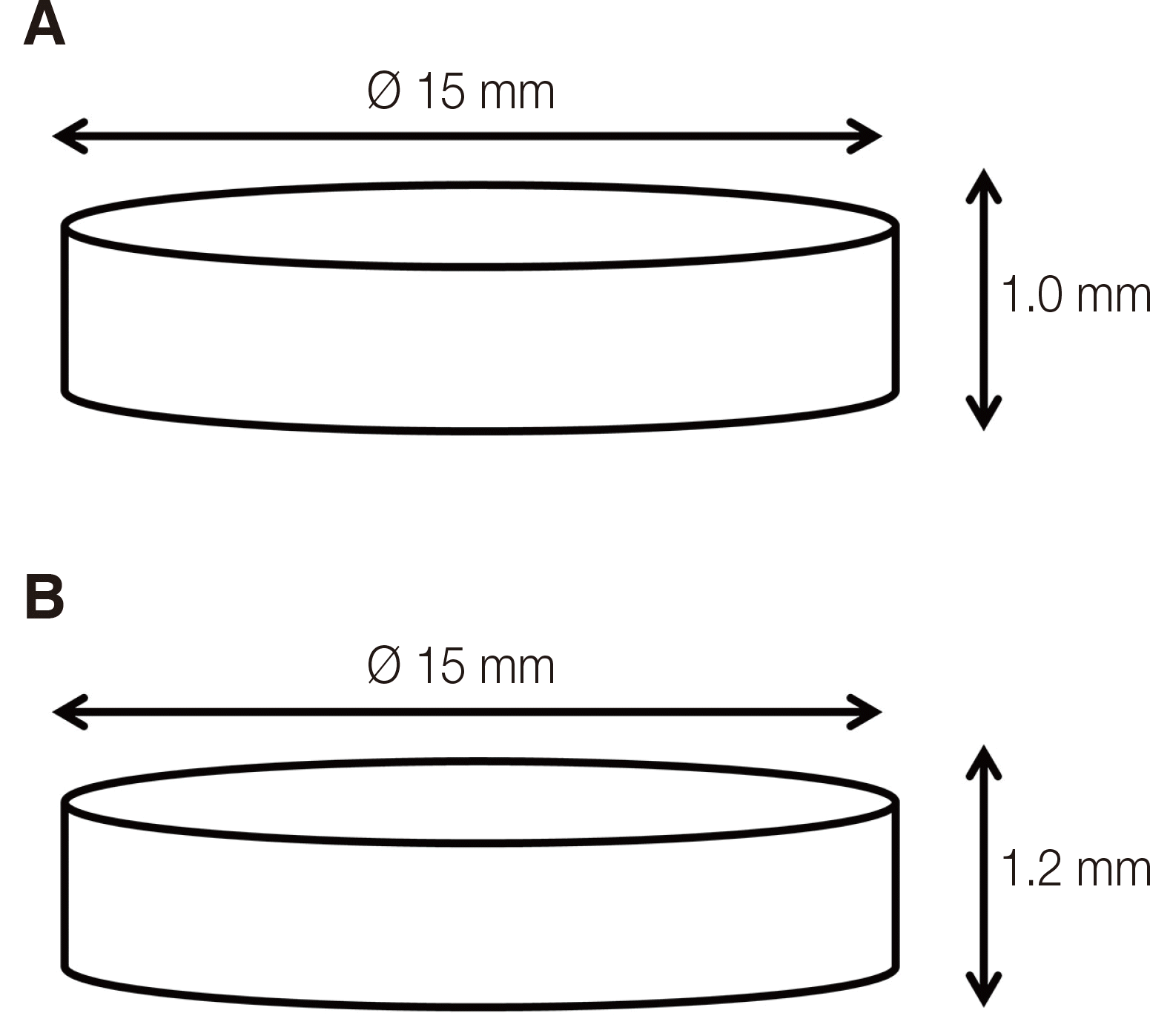
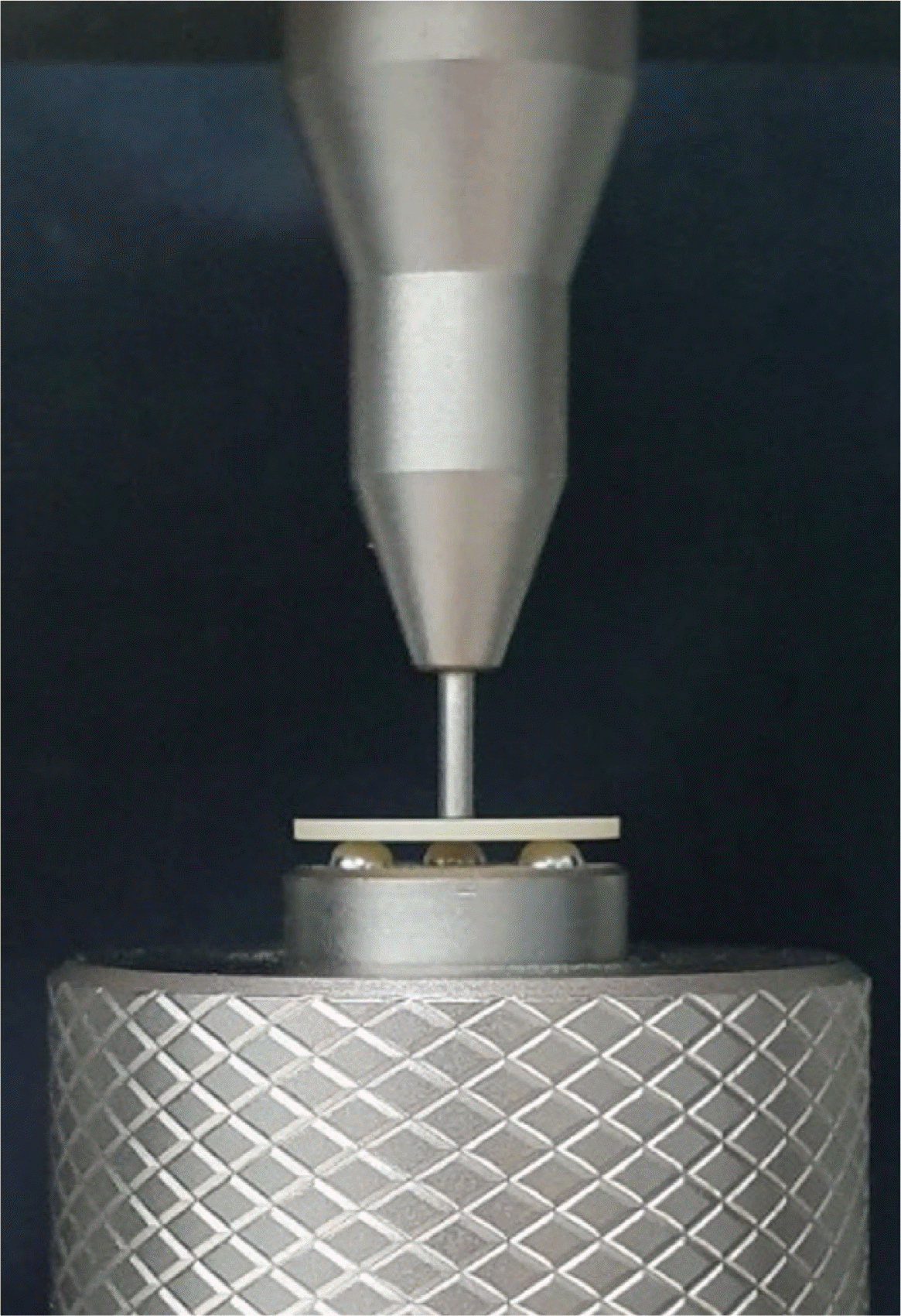
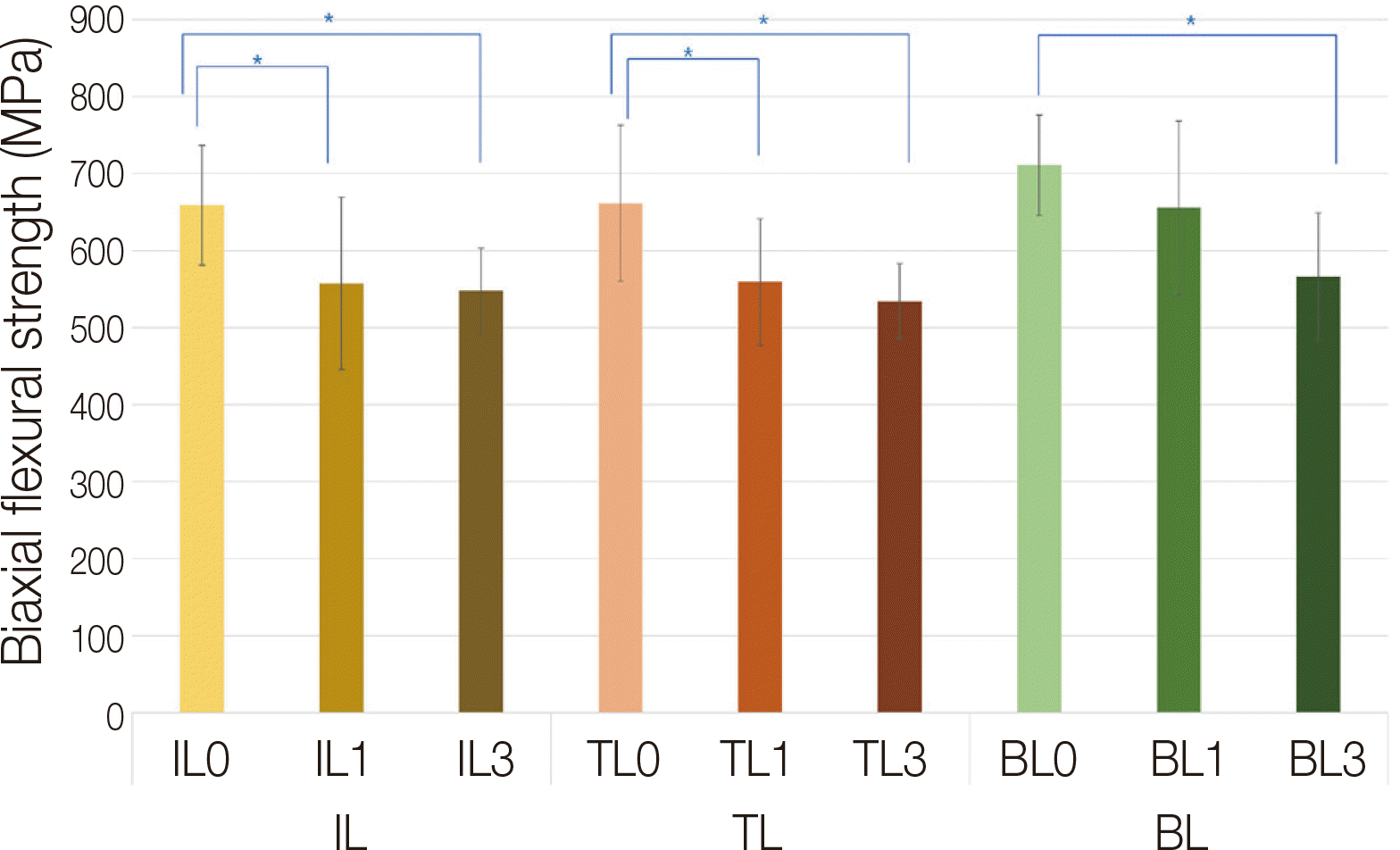
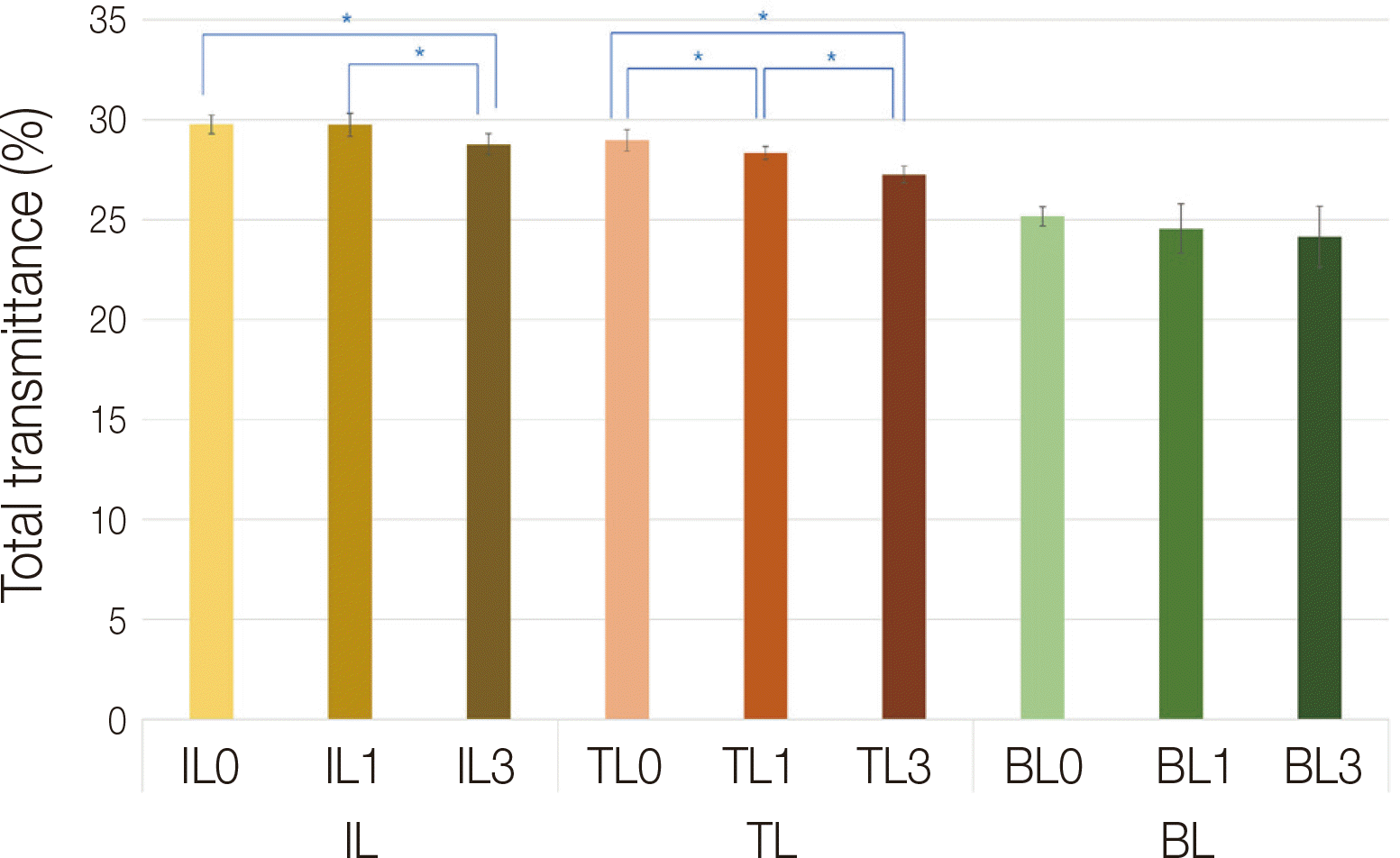
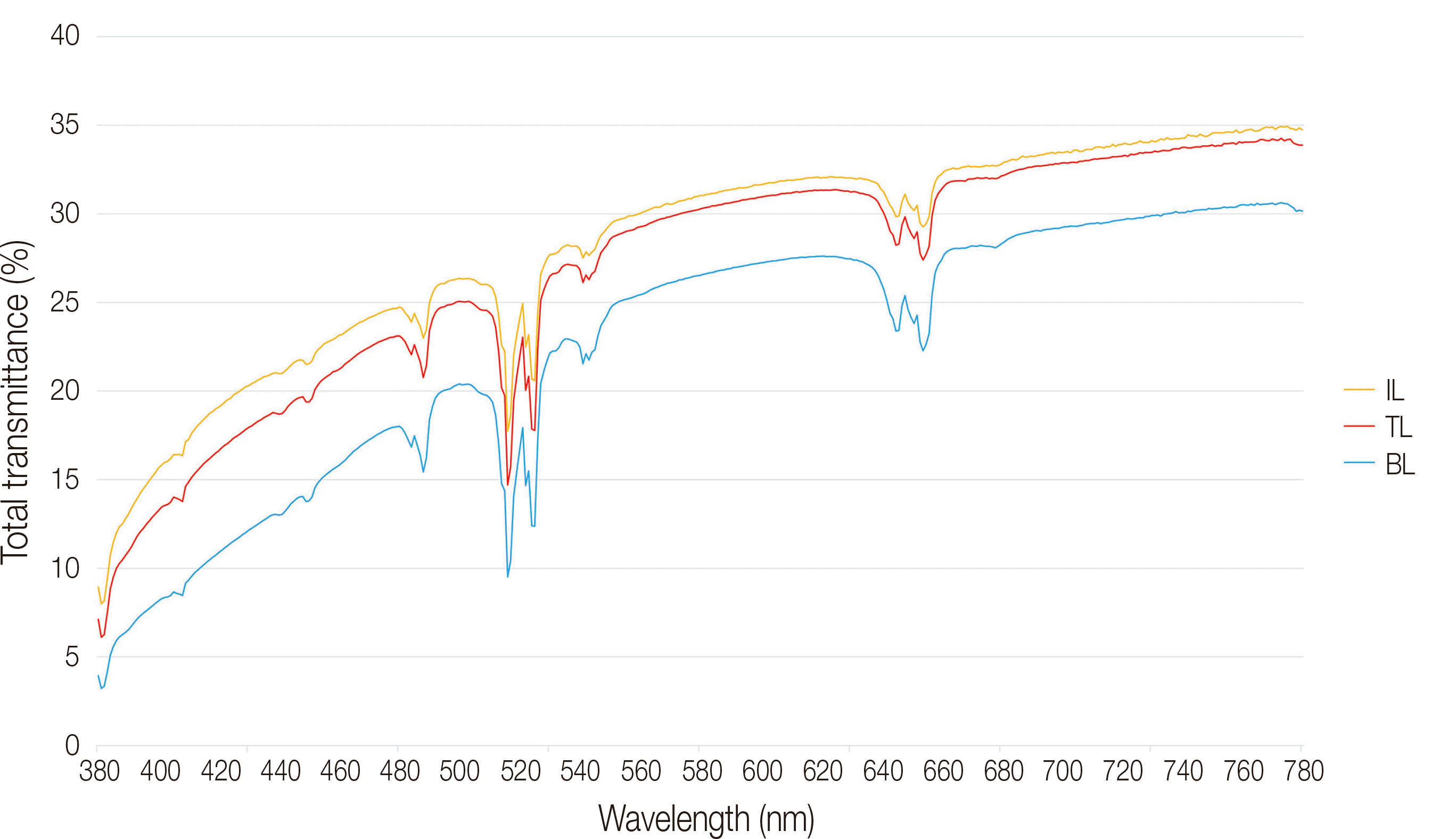
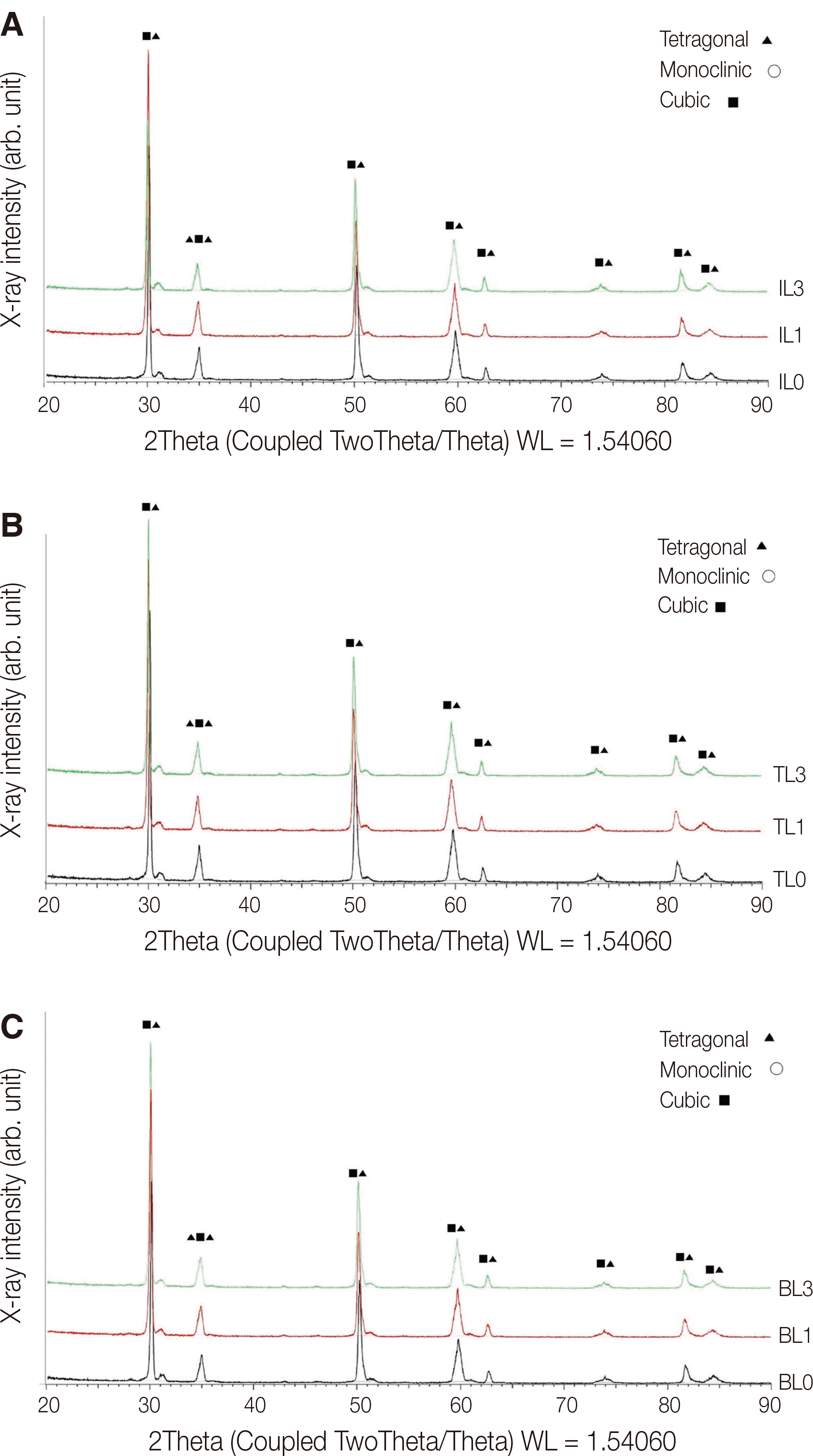
 XML Download
XML Download